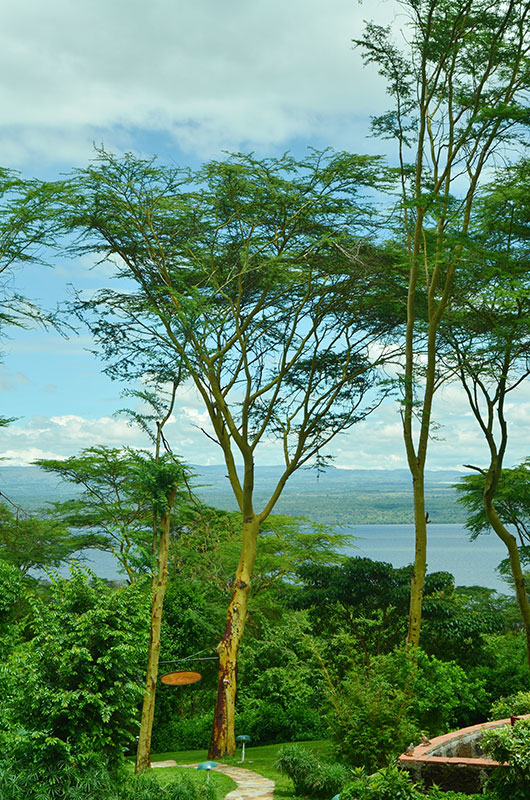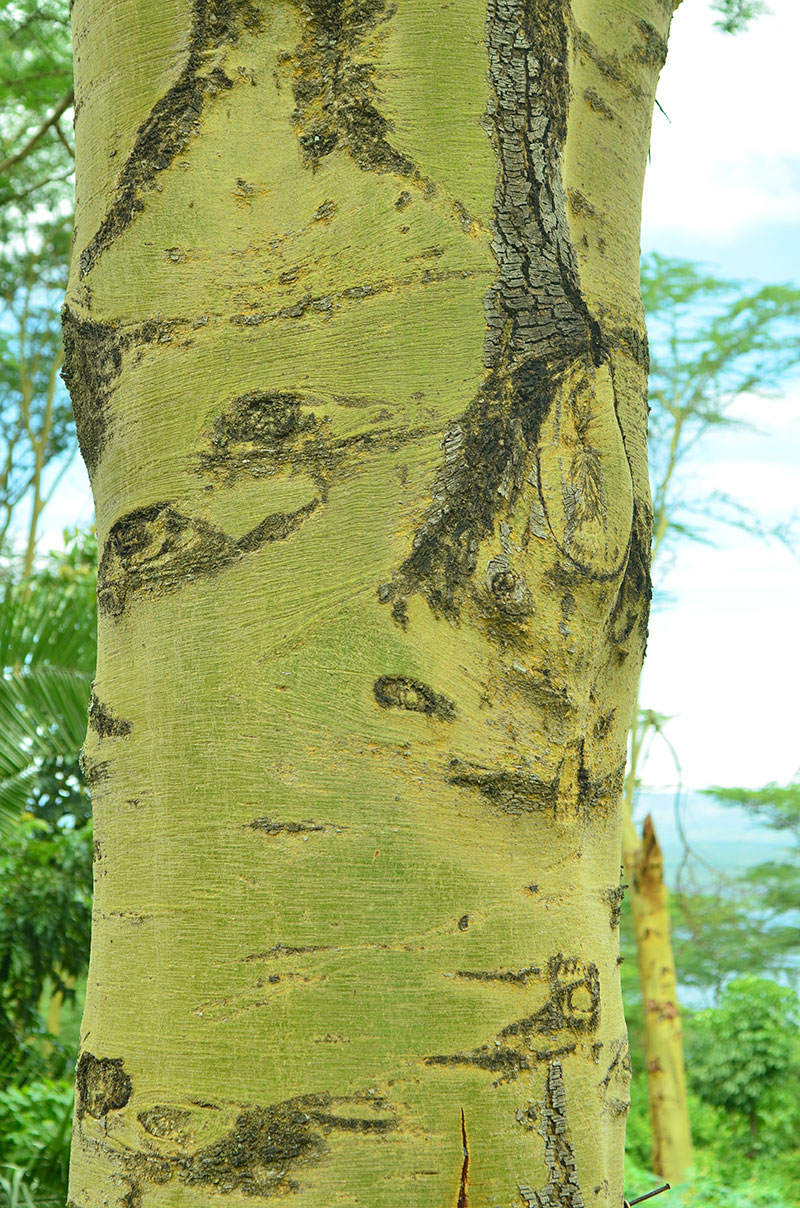| Propagation | Easily propagated by seed placed in boiling water for 12-24 hours, (allowing the water to cool during this period) and then sown before the seeds dry out. The boiling water softens the seed coat and allows quick germination which can vary from one to four weeks. Seed may be sown at any time of year although spring sown seed seems to yield slightly more significant results. Once seedlings have produced their true leaves they may be pricked off into pots and transplanted according to growth rate.
Cutting may also work using half-ripened lateral shoots in mix of equal parts sand and peat/compost and placed in a heated greenhouse under moist shade; cuttings are slow to root.
|
| Notable Specimens | Many groves and majestic specimens may be found In Nakuru National Park, Nakuru, Kenya. |
| Habitat | Often found along river banks, seasonally flooded areas, the margins of lakes and low lying pan areas where underground water is available, at altitudes of 700-2100 m. |
| Bark/Stem Description | Green-yellow bark with pale green young shoots and purple-brown branchlets. |
| Flower Description | Cream to white-yellow with red-pink corollas found in small axiallary groups as a capitate inflorescence on peduncles of 0.8-3 cm. |

